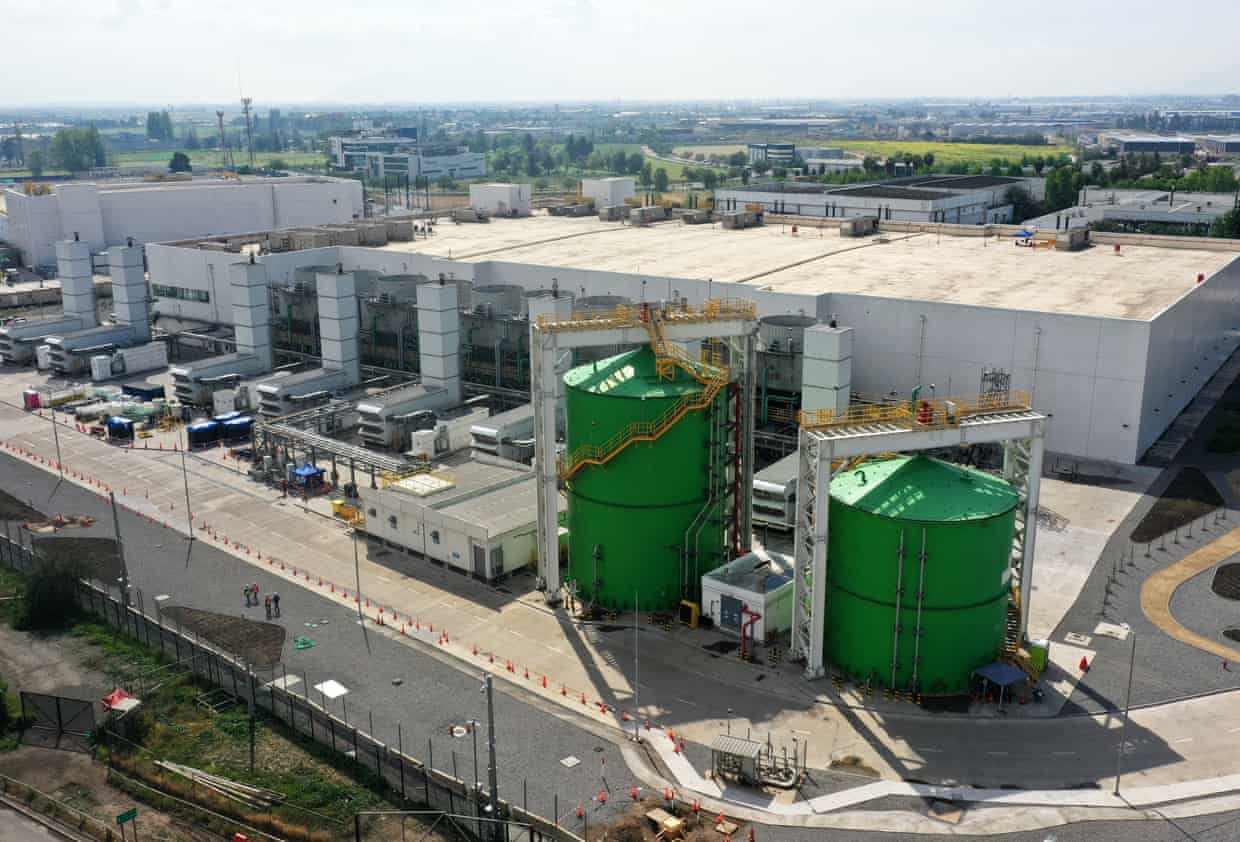Public health advocates are raising serious concerns about potential Pfas (per- and polyfluoroalkyl substances) pollution linked to the surge in data centers driven by the artificial intelligence boom. These facilities, essential for storing servers and processing digital traffic for major tech companies like Google, Microsoft, and Amazon, are not only consuming vast amounts of electricity and water but may also be contributing to an overlooked environmental crisis.
The increased demand for data centers has sparked fears that their reliance on Pfas gas, also known as f-gas, could worsen their climate impact. These gases, known for their potent greenhouse effects, may indicate that the environmental toll of data centers is greater than previously acknowledged. Advocates are especially alarmed by the lack of testing for Pfas in air and water, as companies are not required to disclose the volumes of these chemicals they use or release into the environment.
The urgency of these concerns heightened in mid-September when the Environmental Protection Agency (EPA) announced it would expedite the review process for new Pfas and other chemicals utilized in data centers. Despite the industry’s claims that Pfas usage leads to minimal pollution, advocates argue that the presence of these chemicals poses a significant risk. “We know there are Pfas in these centers and all of that has to go somewhere,” stated Jonathan Kalmuss-Katz, an attorney with the nonprofit organization Earthjustice. He emphasized the need for more comprehensive studies, noting that the long-term impacts of Pfas usage remain poorly understood.
Pfas comprises a class of approximately 16,000 chemicals commonly used to make products resistant to water, stains, and grease. These compounds have been linked to severe health issues, including cancer, birth defects, and kidney disease. Their nickname, “forever chemicals,” derives from their inability to break down naturally in the environment.
Environmental advocates argue that data centers contribute to Pfas pollution both directly and indirectly. The chemicals are essential for operations, particularly in cooling systems, which likely leads to on-site contamination. Additionally, the disposal of Pfas used in equipment is problematic, as complete destruction of these chemicals is not feasible. The production of semiconductors, vital for data centers, also relies heavily on Pfas, further compounding pollution risks around manufacturing plants.
As the United States seeks to bolster its position in the global AI race, political motivation to address the environmental impact of data centers has been minimal. “The US and China are racing to see who can destroy the environment most quickly,” remarked Lenny Siegel, a member of Chips Communities United, a group advocating for environmental safeguards. He underscored the necessity for responsible practices in the industry.
Data centers utilize two primary cooling systems to manage heat generated by electronic equipment. Water cooling systems require substantial water volumes and may involve the discharge of various chemicals, including nitrates and disinfectants, into the environment. Many centers are transitioning to a “two-phase” cooling system that employs f-gas as a refrigerant, which can minimize intentional release during operation. Nevertheless, leaks may still occur, and disposal of f-gas at the end of its lifecycle remains a concern.
The industry maintains that escaping f-gas is not a significant threat because it transforms into a compound known as Tfa upon release. While Tfa is not classified as a Pfas in the United States, recent studies indicate it may have more toxic effects than previously believed, potentially affecting human reproductive systems. Researchers have reported alarming increases in Tfa levels in the environment, including air and water.
While f-gases are valuable to industry—accounting for approximately 60% of all Pfas produced between 2019 and 2022—they are also potent greenhouse gases that can persist in the atmosphere for millennia. Data centers further complicate the Pfas issue as these chemicals are often incorporated into the cables, piping, and electronic components within the facilities. Their volatile nature allows them to easily escape into the air.
Furthermore, electronic waste generated by data centers presents another layer of environmental concern. Frequent upgrades to technology lead to significant waste, and the processing and disposal of this electronic waste contribute to global harm. Mike Belliveau, founder of the nonprofit Bend the Curve, highlighted the urgent need for legislative action on toxic chemicals.
In a troubling development, Chemours, a major f-gas producer, is leveraging the AI and data center boom to justify expanding production at its facilities in Parkersburg, West Virginia, and Fayetteville, North Carolina. Both plants have faced allegations of contaminating local water, soil, and air, leading to health issues among residents. Community opposition has mounted against Chemours’ expansion plans, driven by fears of increased pollution.
In Minnesota, a coalition of environmental groups is collaborating with state lawmakers to draft legislation mandating reporting of Pfas and other chemicals used in cooling processes by data centers. During state hearings, legislators have sought clarity from tech companies on the types of chemicals they utilize and their disposal methods, but responses have been deemed unsatisfactory by advocates. “There’s so much you just don’t know, and we’re at the whim of these big corporations and what they’re willing to tell us,” said Avonna Starck, Minnesota state director for Clean Water Action. She expressed concern over the community’s right to know about potentially harmful chemicals.
The growing scrutiny surrounding data centers and Pfas pollution underscores a critical need for transparency and regulatory oversight as the industry continues to expand.





































































